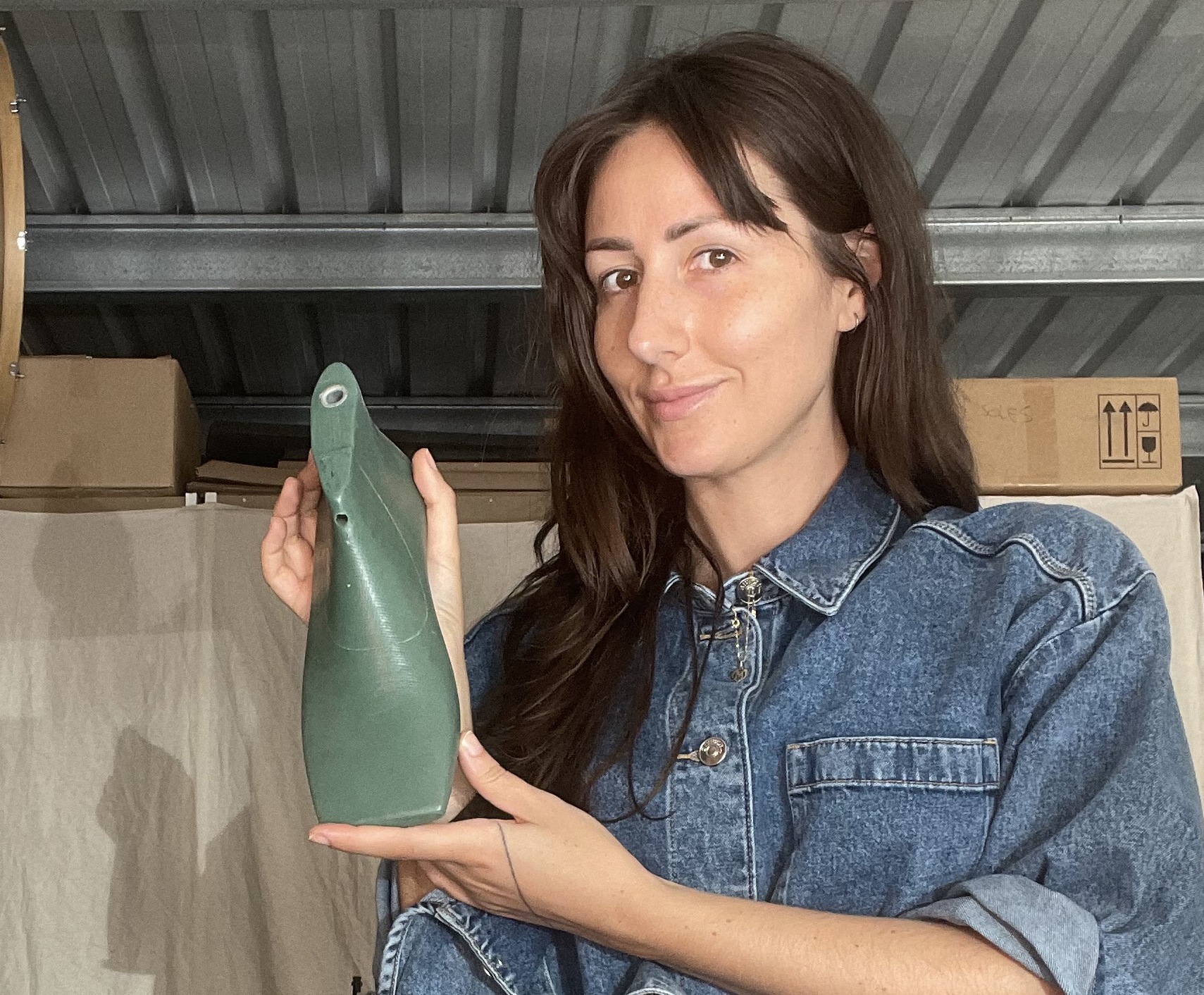Join us as we chat with German designer and architect Stephan Henrich about the creation of “The CRYPTIDE ONE” – a fully 3D printed shoe. Henrich’s design studio in Stuttgart, equipped with a robot lab, has brought forth something special that challenges the norms of traditional footwear.
The CRYPTIDE ONE is a creature-like masterpiece, crafted entirely from a flexible TPE material using the Sintratec S2 system. This high-tech manufacturing process utilizes laser sintering to create a luxurious lifestyle shoe. One standout feature is the uppershoe – a sock-like design with perforations for optimal ventilation, personalized through a 3D scan of the wearer’s foot. The sole is carefully segmented to cater to the wearer’s toe, ball, and heel areas. The midsole boasts a branching structure precisely aligned to the wearer’s weight and walking dynamics, thanks to Finite Element Analysis (FEA) and topology optimization. The CRYPTIDE ONE champions on-demand manufacturing, avoiding excess production. This ethical approach aligns with Henrich’s commitment to sustainability.
Explore the mind of Stephan Henrich, a visionary in architecture, narration, design, and robotics. In this exclusive interview, we’ll dive into the fascinating world of 3D-printed fashion and learn how Henrich’s ideas came to life in the remarkable Cryptide One.


Why did you choose a design that is segmented into the wearer’s toe, ball, and heel areas?
I love to design finding an expression for ‘the creature’ in the object. So the object – in this case, footwear – is of course above all supporting and reacting to the human anatomy but I also wanted to visually extend and translate the anatomy onto the object. Beyond that, it is a work on the footprint of us human creatures: We all leave traces on our ways. I believe these traces should be caused by a much closer connection to our bodies. Also, the brand´s name The CRYPTIDE derives from the ‘creature in the object’: Cryptids are species in cryptozoology – the „science“ of animals that may exist …or not. Wearing the CRYPTIDE ONE will create traces that prove their existence.
What is the material that the shoe is 3D printed off? Why did you choose this material?
The shoe is 3D-printed in TPU. As the shoe is 3d-printed in one go, the challenge was to find a material that works for the shoe´s upper, where it will be in close contact with the wearer´s skin, as well as for the midsole, where it should provide cushioning and stability and for the outsole, that needs to resist abrasion and provide grip. TPU can cover all of these aspects!
What makes your design stand out in comparison to other sneaker designs?
I guess that conceptually and aesthetically the Cryptide ONE design has its independence. The design comes with a few innovations/inventions that I haven´t seen in other footwear to date.

How do you envision the Cryptide sneakers influencing the world of footwear design?
We will see…
What design elements did you prioritize to ensure the style and comfort of the Cryptide sneakers?
The branching structure of the midsole is the result of a simulation-driven design. A topology optimization predicted where the material would be needed to support the wearer´s walking and where material could be left away. This process can help to steer comfort while allowing for a lightweight design. It was important to me that the shape of the upper shoe is as close as possible to the human foot, even the foot of the individual wearer to ensure comfort. As an option, this can be achieved by 3D-scanning the feet of the future wearer to inform the shoe´s geometry with this information. In addition, I wanted to make sure that the TPU material, which is not breathable by default, wouldn´t reduce the wearing comfort. So I went for a continuously perforated upper, that allows comfortable ventilation even in hot summer.
Were there any specific design challenges that you had to overcome to achieve the design you desired? If yes, what?
I wanted the design to be monolithic. One material for everything: No gluing or fusing of different materials or anything that makes pure recycling impossible. So it was a challenge to design the shoe in a way that it is comfortable to wear and durable at the same time.
What made you choose 3D technology to create your design?
I have been developing designs for additive manufacturing (3D printing) for many years – not at all limited to footwear. I have been designing e.g. furniture and robots that only can be produced with the use of 3D printing. Over the years I developed a design language for objects that are meant to be 3D-printed. So it was a natural thing to do to apply this „3D-printing-design-language “to 3D-printable footwear.

What are the advantages and the limitations of using 3D printing, especially when it comes to performance and durability?
When constructed well, 3D-printed shoes can be very durable. I have been testing some pairs for over 1200 km and I am continuing to wear them because they don´t get destroyed. A limitation is the price: 3D printing still is an expensive process.
What can we wish you for 2024?
You could wish me that The CRYPTIDE finally becomes available for purchase soon. And then of course satisfied customers.










